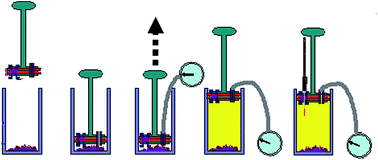Development of a reduced pressure headspace solid-phase microextraction-gas chromatography/mass spectrometric (rpHSSPME-GC/MS) method and application to aroma analysis
Abstract
Using a home-designed manually operated cylinder chamber and piston device, a reduced pressure headspace solid-phase microextraction gas chromatography/mass spectrometry (rpHSSPME-GC/MS) method, has been developed. By decreasing the pressure inside the sample chamber, the sensitivity of headspace SPME was improved remarkably, compared to normal atmospheric pressure conditions. With a solid sample, such as tobacco leaf, overall sensitivity was increased over 18 times at 200 mm Hg compared to atmospheric (760 mm Hg) conditions. Enhancement of SPME sensitivity was lower, but still significant, for an aqueous liquid sample, such as fresh black mulberry juice: extraction sensitivity was increased about 1.83 times (610 mm Hg), 2.14 times (380 mm Hg) and 3.37 times (60 mm Hg). Furthermore, more components were identified at lower extraction pressures. For example, 66 compounds were identified by rpHSSPME-GC/MS in the headspace of mulberry juice at 60 mm Hg, compared with 47 using standard (atmospheric pressure) HSSPME-GC/MS.


 Please wait while we load your content...
Please wait while we load your content...